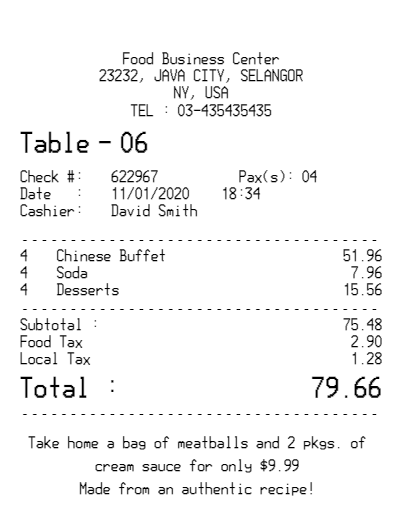Crafting Culinary Transactions: The Art of Designing a Perfect Restaurant Bill Format
In the dynamic world of gastronomy, every aspect of the dining experience is carefully curated to leave a lasting impression. Among the many elements that contribute to this orchestration is the often-overlooked yet essential component – the restaurant bill. Beyond being a mere transactional document, the restaurant bill format is a subtle yet powerful tool that communicates professionalism, transparency, and attention to detail.
The Silent Communicator: Decoding the Restaurant Bill Format
As diners savor the last bites of a delectable meal, the arrival of the bill signals the culmination of the dining experience. The format of this seemingly routine document, however, has the potential to convey a wealth of information beyond the mere tally of expenses. It is a silent communicator that reflects the ethos of the establishment and sets the stage for a positive farewell.
The Balance of Simplicity and Detail
Crafting the ideal restaurant bill format involves striking a delicate balance between simplicity and detail. A cluttered and confusing invoice can mar an otherwise impeccable dining experience, while a thoughtfully designed format enhances customer satisfaction. Clearly delineated sections for food, beverages, taxes, and service charges contribute to transparency, ensuring that diners understand the composition of their final tab.
Branding Through the Bill
A well-designed restaurant bill format is not just a financial summary; it's an extension of the restaurant's brand identity. From the choice of font to the inclusion of a subtle logo, every detail contributes to reinforcing the establishment's image. The bill becomes a miniature canvas, an opportunity to leave a visual imprint that resonates with the overall aesthetic of the dining venue.
Transparency and Trust
In an era where transparency is highly valued, the restaurant bill format plays a pivotal role in fostering trust between the establishment and its patrons. Clearly itemized charges, accurate pricing, and explicit details regarding taxes and service fees contribute to an atmosphere of openness. Establishing this transparency enhances the credibility of the restaurant, leaving customers with a sense of assurance and satisfaction.
Technology and Innovation
The digital age has ushered in a wave of technological innovation, and the restaurant industry is no exception. The restaurant bill format has evolved beyond the traditional paper receipt to incorporate digital platforms and mobile applications. Electronic bills not only contribute to sustainability but also offer a seamless and efficient way for diners to review and settle their expenses.
Educating and Enhancing the Dining Experience
The restaurant bill format serves as an educational tool, providing diners with insights into the breakdown of costs associated with their meal. Some establishments go the extra mile by including brief descriptions of dishes, highlighting locally sourced ingredients, or suggesting complementary pairings. This not only adds value to the dining experience but also cultivates an informed and appreciative customer base.
Future Trends: Personalization and Interaction
As the hospitality industry continues to evolve, the future of restaurant bill formats may witness a surge in personalization and interactive elements. Customized messages, personalized recommendations, and even interactive QR codes leading to surveys or promotions could become integral components, further engaging diners and fostering a sense of connection.
Click here for more information :-

Comments
Post a Comment